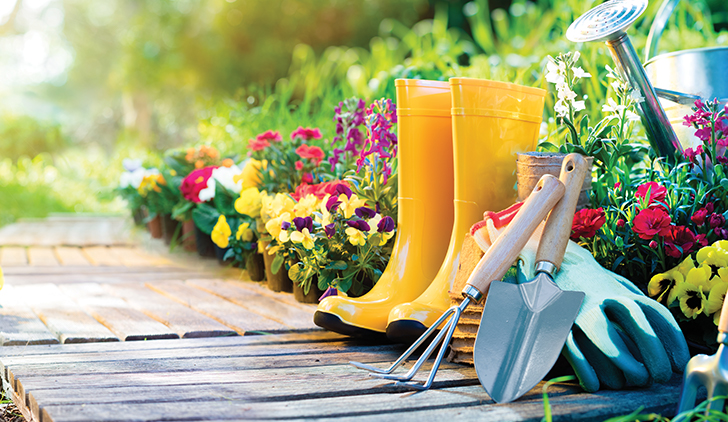
The season of bright colors and beautiful blooms is upon us, and your green thumb is at the ready! But before you start your latest landscaping project, spring into safety the right way with tips for working outdoors.
Grab some gloves
We won’t beat around the bush. Yard work can be a messy — and painful — job. Keep your hands protected by wearing gloves. For heavy-duty work, consider investing in a pair of gloves that can withstand cuts and abrasions while still offering a solid grip on any equipment you may use.
Roll down your sleeves
It might be hot out there, but putting on long sleeves before going outside is a great way to stay safe in the heat of summer. Wearing long-sleeve shirts and long pants can protect you from getting a sunburn, but you should still apply sunscreen before working outdoors to protect from the sun’s UVB and UVA rays. To help prevent heat stress, stick to fabric that’s breathable, lightweight, loose-fitting and dries quickly. For added precaution, top off your look with a wide-brimmed hat!
Keep critters at bay
Chances are, you aren’t alone while working in your garden. Before heading outside, use bug repellent to ward off pests like mosquitoes and ticks — but don’t stop there. When your work is done for the day, be sure to do a check for ticks once you come inside to reduce your risk of Lyme disease. These tiny pests cling to crevices on your body, including under the arms, the back of your knees, between your legs and on your waist. To remove a tick, use tweezers and get as close to the skin as possible. Then, clean the area immediately.
Leaves of three, let it be
Whether you’re a plant parent newbie or a master gardener, everyone should know which plants to avoid. Poison ivy and poison oak contain urushiol, an oil that, according to the Centers for Disease Control and Prevention (CDC), causes an allergic reaction — in this case, an itchy and unpleasant rash — in the majority of people. While poison ivy leaves have pointed tips with a fuzzy look, poison oak leaves look like, well, oak leaves. Both usually grow in clusters of three (though poison oak can have more), and both can grow white berries.


